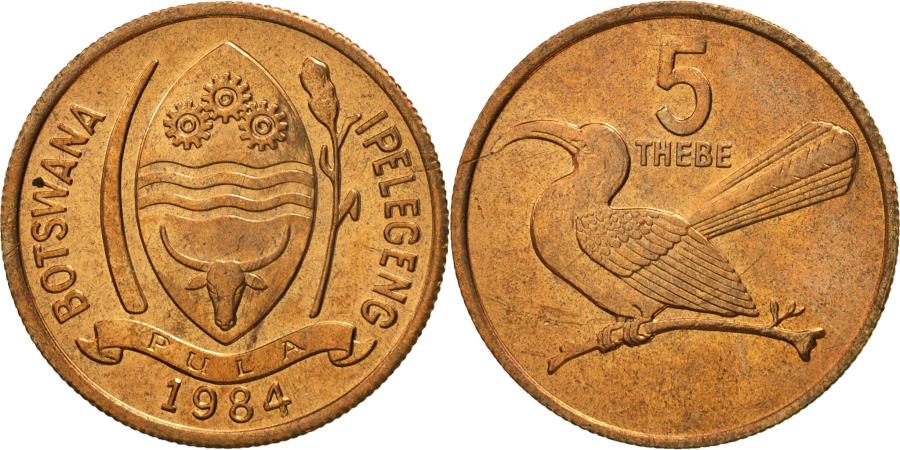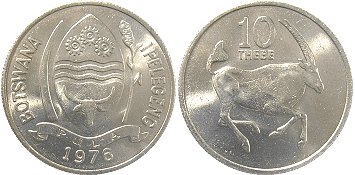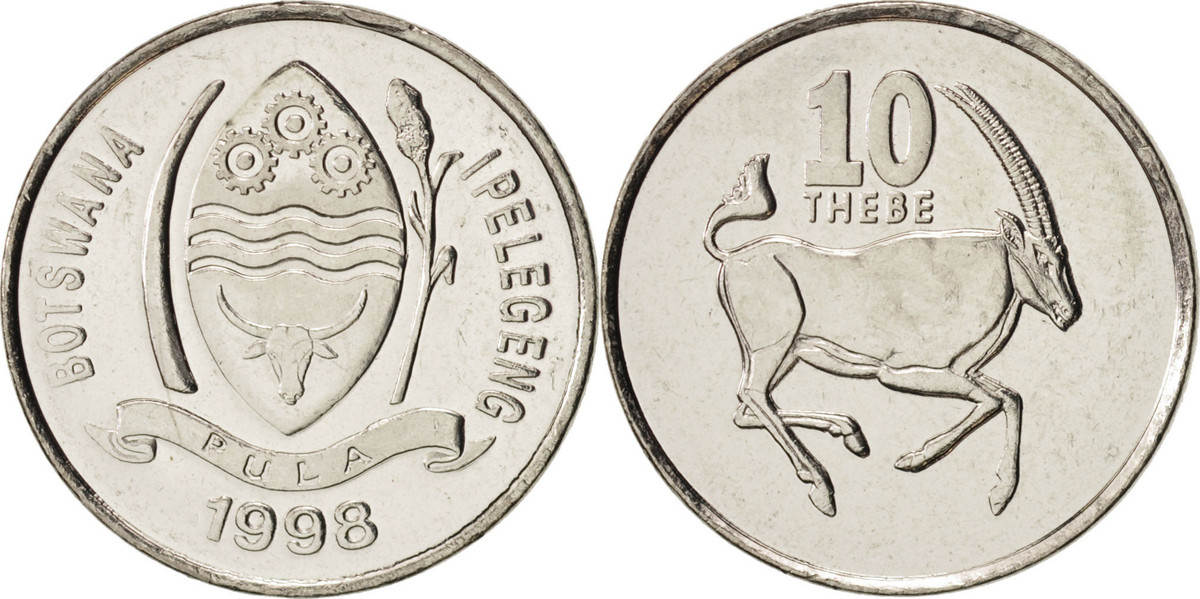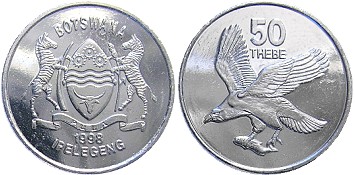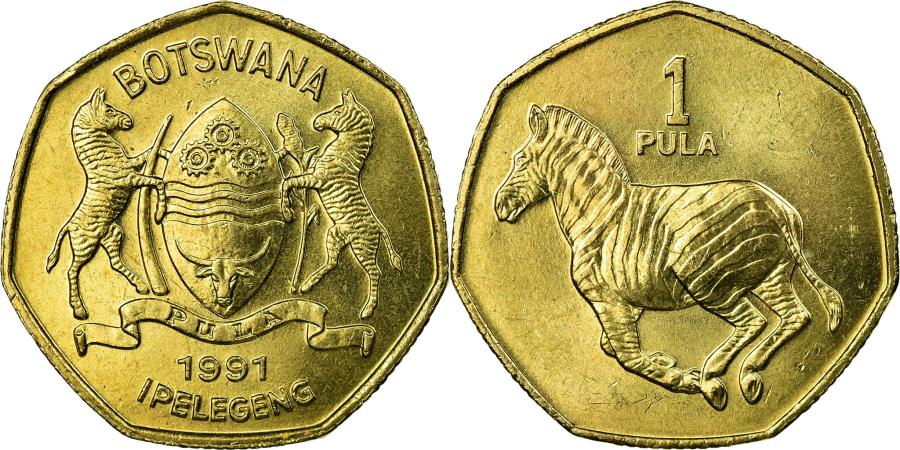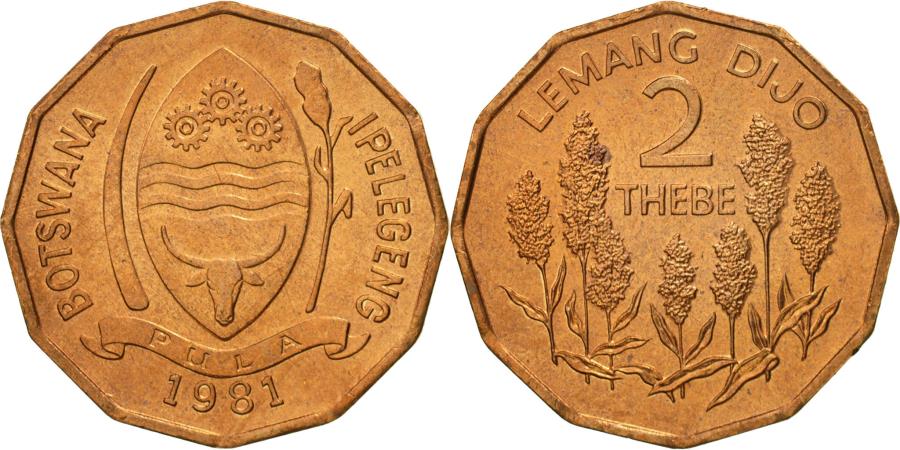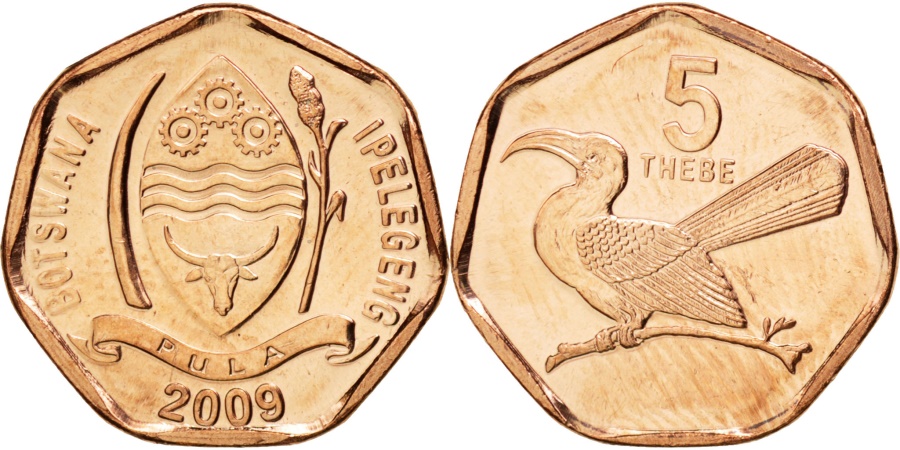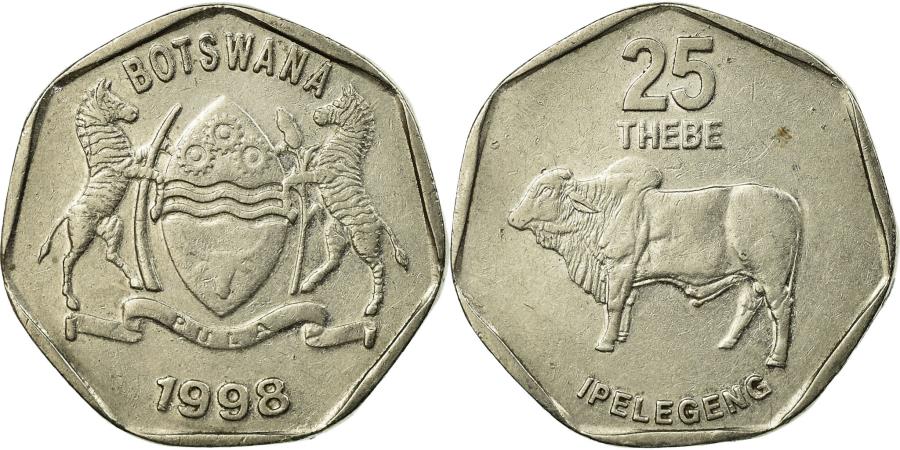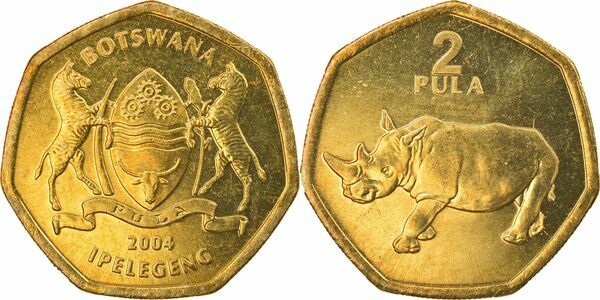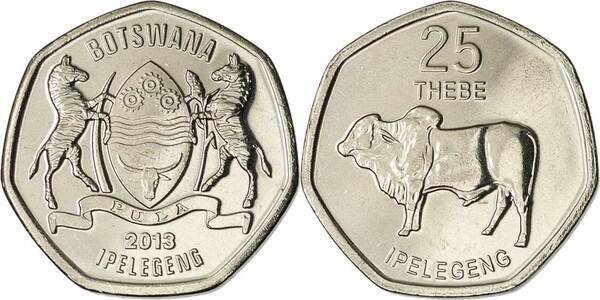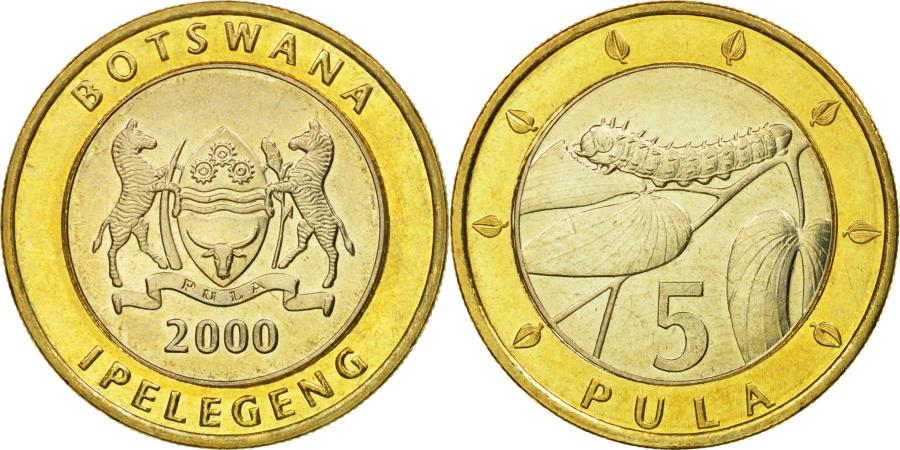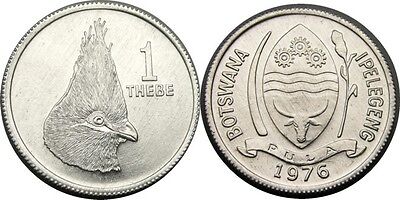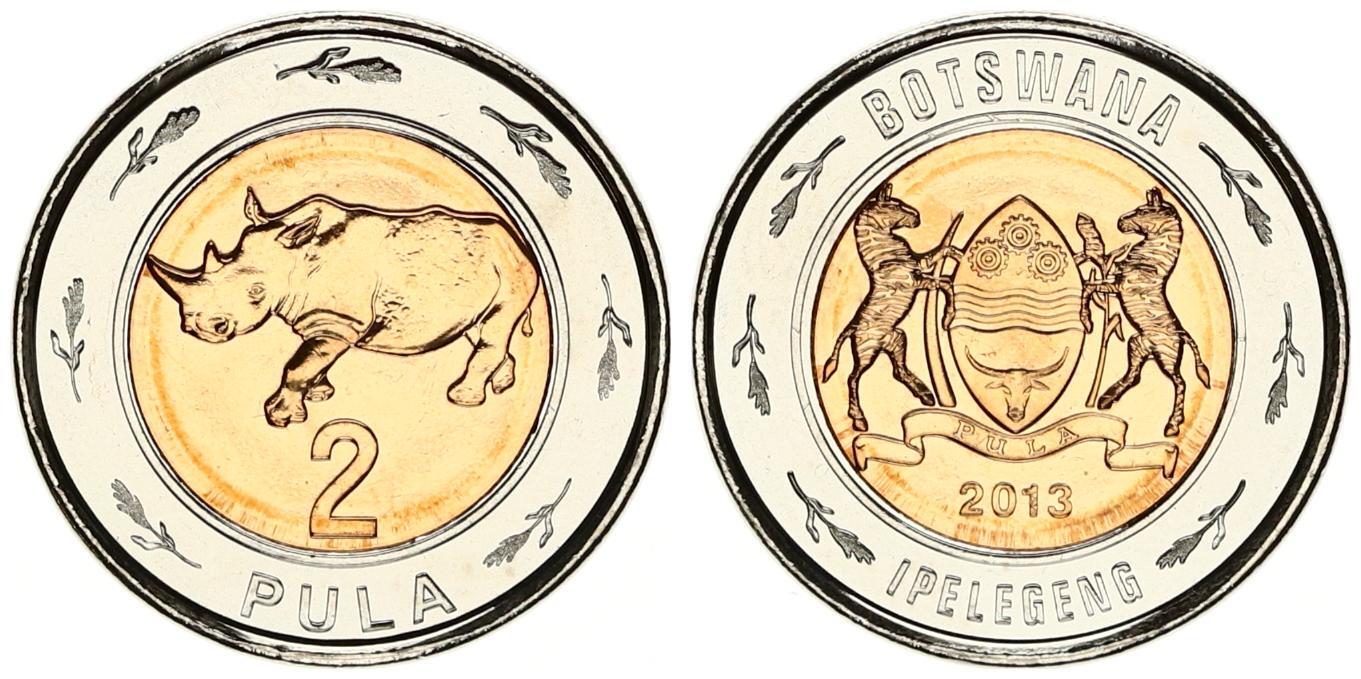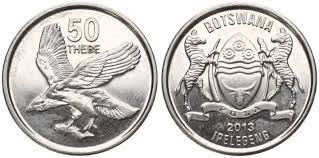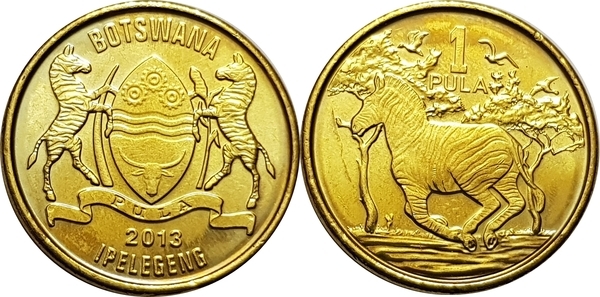בוטסואנה – Botswana
בוטסואנה 

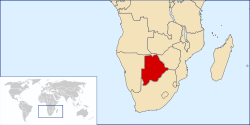
In 1976, the Pula was introduced to replace the South African RAnd . Botswana . During the introduction of Pula in 1976, coin denominations were 1, 5, 10, 25, and 50 thebe as well as 1 Pula. Aluminum was used in the one thebe coins while the 5 thebe coins were made of bronze. All the coins were round except the 1 Pula coin which had a scalloped shape. In 1981, the dodecagonal two thebe coins were introduced though, after 1985, their use was stopped. The replacement of the five thebe bronze coins by bronze-plated steel coins occurred in 1991, together with the replacement of the 10, 25, and 50 thebe cupro-nickel coins by the nickel-plated steel coins. During the same year, there was also the transition of the 1 Pula coin to a nickel-brass coin that was smaller than the first coin. The coin also had seven sides and was an equilateral curve.
Later, in 1994, there was the introduction of the 2 Pula coin that had a similar shape as the smaller 1 Pula coin and was made of nickel-brass. The size of the 2-pula coin in 2004 was smaller than the one before, and it was steel with a brass plate. In 1998, the 1 and 2 thebe coins were removed from circulation. Consequently, the thebe coins that came into circulation were in 5, 10, 25, and 50 denominations. The 5 and 25 thebe had seven sides while the 10 and 50 coins were still round. In the year 2000, there was the introduction of a 5 Pula bimetallic coin which showed a mopane caterpillar feeding on a branch of a mopane tree. The composition of the coin was the aluminum-nickel-bronze ring above the cupronickel center. In 2013, there was the introduction of a new sequence of pula coins.
•
